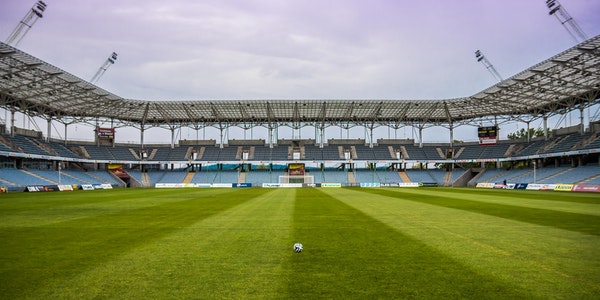(5) Smart Control Systems:
Breakthrough: Integration with smart control systems and the Internet of Things (IoT) allowed for more dynamic and customizable lighting solutions. (To Be Continued)
Impact: These systems enabled precise control over lighting conditions, including brightness, color temperature, and timing, enhancing the flexibility and functionality of venue lighting.
Example: Venues like the AT&T Stadium in Dallas use smart lighting systems to create dynamic lighting effects tailored to specific events and conditions.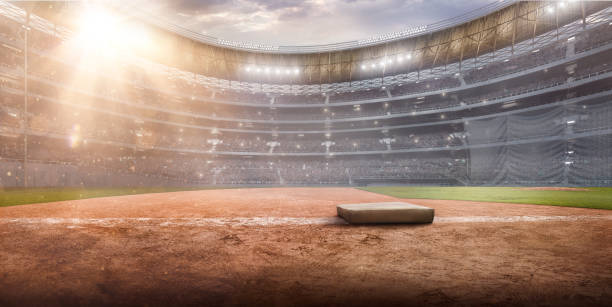
(6) Sustainability and Energy Efficiency:
Breakthrough: LEDs’ superior energy efficiency and reduced environmental impact became a significant selling point.
Impact: The long-term cost savings and sustainability benefits drove many venues to adopt LED lighting, aligning with broader environmental goals.
Example: Many new sports venues are designed with LED lighting to minimize their carbon footprint and operational costs from the outset.
These breakthroughs collectively addressed the initial challenges faced by LED technology, making it the preferred choice for modern sports venue lighting and ensuring its widespread adoption.
I. Benefits of LED Lighting in Sports Venues
Enhanced Athlete Performance:
Improved visibility and clarity.
How LED Lighting Enhances Visibility and Clarity in Sports Venues
- Superior Light Quality:
High Color Rendering Index (CRI):
Detail: LED lights typically have a high CRI, often above 80 and sometimes reaching up to 95, which means they render colors more accurately and vividly compared to traditional lighting.
Impact: This results in more realistic and vibrant colors on the field or court, improving the visual experience for players, officials, and spectators.
Example: In sports like basketball and soccer, where precise color differentiation is crucial, the high CRI of LED lights ensures that the players’ uniforms and the playing surface are clearly visible.
- Uniform Illumination:
Even Light Distribution:
Detail: LED fixtures are designed to distribute light evenly across the playing area, reducing hotspots and dark areas.
Impact: This uniformity in lighting minimizes shadows and ensures consistent visibility, which is essential for both athletes and referees to track fast-moving objects and make accurate decisions.
Example: In tennis, where the speed of the ball can exceed 120 mph, uniform lighting ensures that the ball is visible at all times, regardless of its position on the court.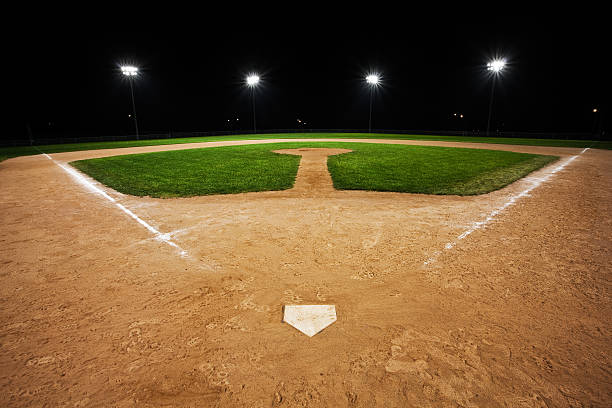
- Reduced Glare and Flicker:
Anti-Glare Technology:
Detail: Modern LED fixtures incorporate anti-glare technology, which minimizes the reflection and scattering of light.
Impact: Reduced glare prevents visual discomfort and distractions for athletes, allowing them to focus better on their performance.
Example: In sports like baseball and cricket, where players need to track high-flying balls against bright lights, reduced glare from LEDs enhances visibility.
Flicker-Free Illumination:
Detail: LED lights provide stable and flicker-free illumination, unlike some traditional lighting systems that can produce noticeable flickering.
Impact: Flicker-free lighting is crucial for high-speed sports and for high-definition broadcasts, as it prevents visual strain and improves the quality of slow-motion replays.
Example: In fast-paced sports like ice hockey and basketball, flicker-free lighting ensures clear visibility for both players and viewers.
- Adjustable Brightness and Color Temperature:
Dynamic Adjustability:
Detail: LED systems can be easily adjusted for brightness and color temperature to match different sports and event requirements.
Impact: This flexibility allows venues to optimize lighting conditions for different activities, enhancing visibility and reducing eye strain.
Example: During a football game, the brightness can be increased for better visibility, while for concerts or special events, the color temperature can be adjusted to create the desired atmosphere.
- Enhanced Nighttime Visibility:
Effective Illumination for Outdoor Venues:
Detail: LED lights are particularly effective for illuminating large outdoor spaces, providing clear and bright light that mimics daylight.
Impact: Improved nighttime visibility enhances safety for players and officials and provides a better experience for spectators.
Example: In outdoor sports like football and athletics, LED lighting ensures that the entire field is well-lit, allowing for safe and effective play even during night games.
- High-Definition Broadcast Quality:
Optimized for Modern Broadcasting:
Detail: LED lighting is optimized for high-definition and ultra-high-definition television broadcasts, offering clearer and sharper images.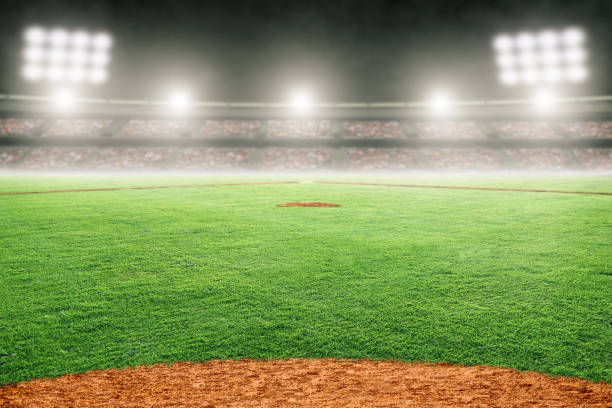
Impact: Enhanced lighting quality improves the viewing experience for fans watching from home, making sports events more engaging and visually appealing.
Example: Major sports events like the Super Bowl and the Olympics use LED lighting to ensure that every detail is captured in high definition for millions of viewers worldwide.
The superior light quality, uniform illumination, reduced glare, flicker-free operation, and dynamic adjustability of LED lighting systems significantly enhance visibility and clarity in sports venues. These improvements not only boost athlete performance and safety but also elevate the overall fan experience, both in-stadium and through broadcasts. As a result, LED lighting has become an integral part of modern sports venue design and operation, ensuring optimal lighting conditions for all types of sports and events.
Reduction in glare and shadows
How LED Lighting Reduces Glare and Shadows in Sports Venues
- Anti-Glare Technology:
Advanced Lens Design:
Detail: LED fixtures often incorporate advanced lens designs and diffusers that evenly distribute light and minimize glare.
Impact: This ensures that light is directed precisely where it is needed without scattering and causing glare that can distract athletes and fans.
Example: In basketball arenas, anti-glare technology helps players see the ball and court markings clearly, even when looking up towards the lights.
- Precision Optics:
Focused Light Distribution:
Detail: LEDs use precision optics to control the direction and spread of light, reducing unwanted light spill and focusing illumination on specific areas.
Impact: This precise control helps in reducing glare by ensuring that light is not unnecessarily spread into players’ or spectators’ eyes.
Example: In tennis courts, focused lighting ensures that the court is well-lit without light spilling into the spectators’ seating areas.
- Consistent Light Output:
Stable Illumination:
Detail: LEDs provide stable and consistent light output without the fluctuations seen in some traditional lighting systems.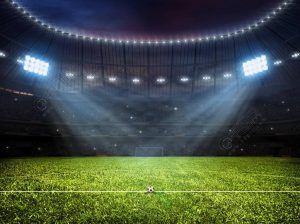
Impact: Consistent light levels reduce the occurrence of harsh shadows and glare, creating a more uniformly lit environment.
Example: In indoor soccer fields, consistent illumination ensures that there are no sudden bright spots or dark areas that could impede player visibility.
- Positioning and Design:
Strategic Fixture Placement:
Detail: The design and positioning of LED fixtures are optimized to reduce direct glare and shadows on the playing surface.
Impact: Proper placement ensures that players and referees have a clear line of sight without being blinded by direct light.
Example: In football stadiums, LED lights are positioned to illuminate the field evenly while minimizing glare for players looking up to catch a ball.
- Dimming Capabilities:
Adjustable Brightness:
Detail: LED systems can be dimmed and adjusted to optimal brightness levels depending on the event, time of day, and specific requirements.
Impact: This capability helps in managing light intensity to reduce glare and harsh shadows, providing a comfortable visual environment.
Example: During evening events in multipurpose arenas, lighting can be adjusted to reduce intensity and glare while maintaining sufficient visibility.
- Reduced Reflective Glare:
Non-Reflective Surfaces:
Detail: LED fixtures often include non-reflective surfaces and coatings that further minimize reflective glare.
Impact: Reduced reflective glare ensures that light does not bounce off surfaces in unintended ways, which can be distracting.
Example: In hockey arenas, where ice surfaces can cause significant reflective glare, LED lighting with non-reflective coatings greatly improves visibility.
- Smart Control Systems:
Automated Adjustments:
Detail: Integration with smart control systems allows for automated adjustments based on real-time conditions, such as changes in natural light.
Impact: Dynamic adjustments help maintain optimal lighting levels, reducing glare and shadows as conditions change during an event.
Example: In outdoor stadiums, smart systems can adjust lighting as the sun sets, ensuring consistent and glare-free illumination throughout the event.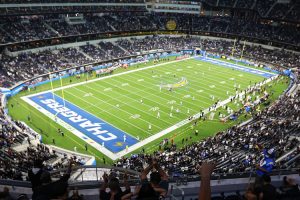
LED lighting technology significantly reduces glare and shadows in sports venues through advanced lens designs, precision optics, stable illumination, strategic fixture placement, dimming capabilities, non-reflective surfaces, and smart control systems. These improvements enhance the visual experience for athletes and spectators, contributing to better performance, safety, and enjoyment of sports events. As a result, LED lighting has become the preferred choice for modern sports venues seeking to provide the best possible lighting conditions.
Impact on player safety and performance metrics
How LED Lighting Enhances Player Safety and Performance in Sports Venues
- Improved Visibility and Reaction Times:
Enhanced Illumination:
Detail: LED lighting provides bright, consistent, and uniform illumination, ensuring that players can see clearly across the entire playing area.
Impact: Better visibility helps players react more quickly to the movement of the ball and other players, improving their performance.
Example: In sports like basketball and soccer, where quick reflexes and precise movements are crucial, enhanced visibility can lead to faster reaction times and more accurate plays.
- Reduction of Glare and Shadows:
Minimized Glare:
Detail: LED lights are designed to minimize glare, which can cause temporary blindness or discomfort for players.
Impact: Reduced glare allows players to maintain focus and visual clarity, particularly during critical moments in the game.
Example: In baseball, where players frequently look upwards to catch fly balls, reduced glare helps them track the ball better, reducing the risk of errors or injuries.
Even Lighting:
Detail: LED systems provide even lighting with fewer shadows, ensuring that there are no dark spots on the playing surface.
Impact: Consistent lighting across the entire field or court reduces the risk of players misjudging distances or missing obstacles, enhancing safety.
Example: In football, even lighting ensures that players can see the entire field clearly, reducing the likelihood of collisions and falls.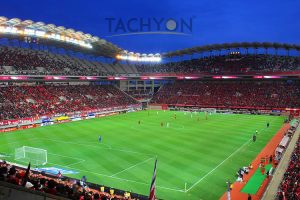
- Enhanced Color Rendering:
High CRI:
Detail: LED lights have a high Color Rendering Index (CRI), which means they accurately render colors.
Impact: This helps players distinguish between different colors more easily, which can be crucial for identifying teammates, opponents, and boundary lines.
Example: In sports like hockey, where fast-paced action occurs on a white ice surface, high CRI lighting ensures that players can clearly see puck and jersey colors, improving game dynamics and safety.
- Reduced Flicker:
Flicker-Free Illumination:
Detail: LED lighting provides stable, flicker-free illumination, unlike some traditional lighting systems that can produce noticeable flickering.
Impact: Flicker-free lighting prevents visual strain and disorientation, particularly during high-speed actions, contributing to better performance and reduced risk of injury.
Example: In sports like volleyball, where the ball moves rapidly, flicker-free lighting helps players maintain visual contact with the ball, enhancing their performance and reducing eye strain.
- Better Environmental Adaptation:
Adjustable Brightness and Color Temperature:
Detail: LED systems can be adjusted for brightness and color temperature to match different conditions and sports requirements.
Impact: This adaptability ensures optimal lighting conditions, whether it’s an indoor arena or an outdoor field, enhancing player comfort and performance.
Example: In indoor arenas, the ability to adjust lighting to warmer temperatures for evening games can create a more comfortable environment, reducing fatigue and improving focus.
- Energy Efficiency and Reduced Heat:
Lower Heat Emission:
Detail: LED lights emit significantly less heat compared to traditional lighting systems, reducing the overall temperature in indoor venues.
Impact: Lower heat levels help maintain a comfortable playing environment, preventing overheating and dehydration among players.
Example: In indoor sports like basketball and futsal, cooler temperatures ensure that players can perform at their best without the added stress of excessive heat.
- Longer Lifespan and Reliability:
Consistent Performance:
Detail: LEDs have a longer lifespan and maintain consistent performance over time, reducing the likelihood of lighting failures during games.
Impact: Reliable lighting ensures that games are not interrupted due to lighting issues, allowing for uninterrupted play and consistent performance conditions.
Example: In high-stakes events like professional soccer matches, reliable LED lighting ensures that the game proceeds smoothly, maintaining the integrity of the competition.
LED lighting significantly enhances player safety and performance metrics by providing improved visibility, reducing glare and shadows, offering high color rendering, ensuring flicker-free illumination, adapting to environmental conditions, emitting less heat, and maintaining reliable performance. These benefits contribute to a safer, more comfortable, and visually optimized playing environment, allowing athletes to perform at their best while minimizing the risk of injuries. As a result, LED lighting is increasingly becoming the standard for modern sports venues aiming to enhance both safety and performance.
(To Be Continued)

